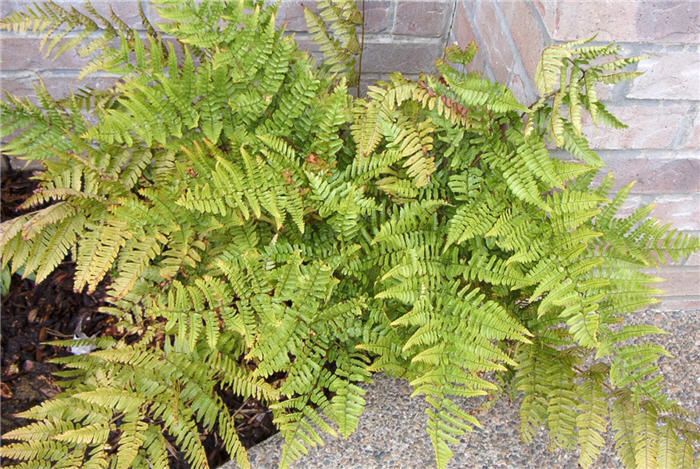| Botanical Name: Dryopteris erythrosora | |
| Common Name: Autumn Fern |

-
Anatomy
-
Culture
-
Design
Plant Type
Ground cover, Perennial, Fern
Height Range
1-3'
Flower Color
n/a
Flower Season
n/a
Leaf Color
Bronze, Dark Green, Red
Bark Color
n/a
Fruit Color
n/a
Fruit Season
n/a
Sun
Shade
Water
High
Growth Rate
Slow
Soil Type
Clay, Loam, Rocky, Unparticular
Soil Condition
Average, Rich, Well-drained, Moist
Soil pH
Acid, Neutral
Adverse Factors
n/a
Design Styles
Formal, Japanese, Tropical, Water Garden, Woodland
Accenting Features
Unusual Foliage
Seasonal Interest
Summer
Location Uses
Entry, Perennial Border, Shrub Border, Foundation, Patio
Special Uses
Container, Cut Flowers, Naturalizing, Small Spaces
Attracts Wildlife
n/a
Information by: Stephanie Duer
Photographer:
Photographer:
-
Description
-
Notes
Autumn fern is one of the few ferns that will survive in our hot, arid summers. Young fronds have a coppery-red tint that changes to deep green as leaves mature. Grows about 1 to 2 feet high, and spreads about 15 to 18 inches by underground stems. Considered drought tolerant for a fern, but it will require regular watering in our arid climate.
Hardy to USDA Zone 5. Grow in full to bright shade. Prefers soils high in organic content, but doesn't tolerate standing water. Ferns can be difficult to establish in our gardens; try tucking it into shady spots around the bases of taller, woody shrubs to provide protection from both summer sun and winter's wind.